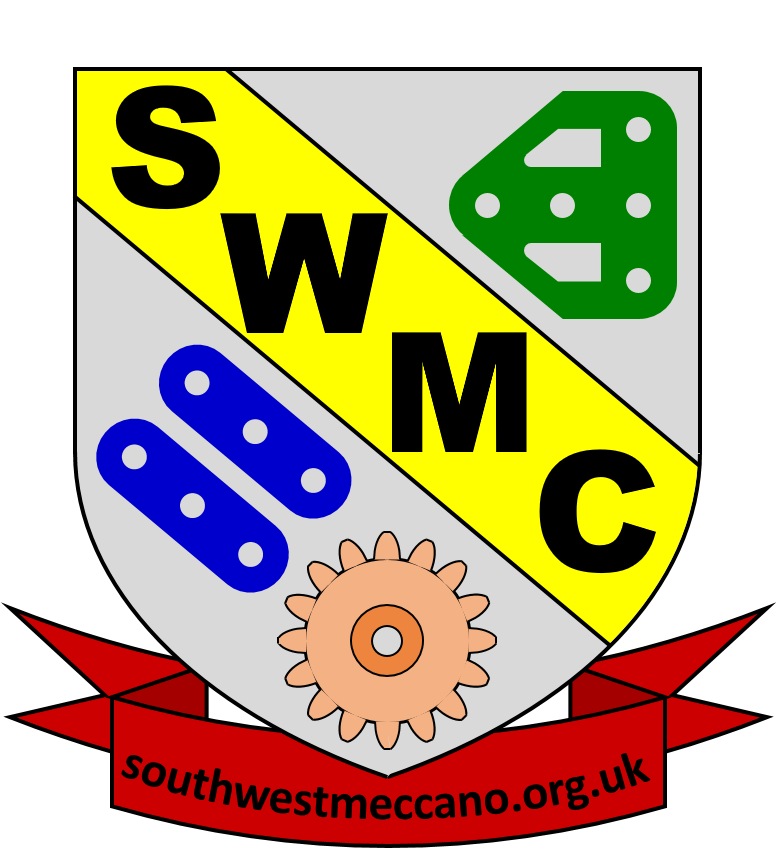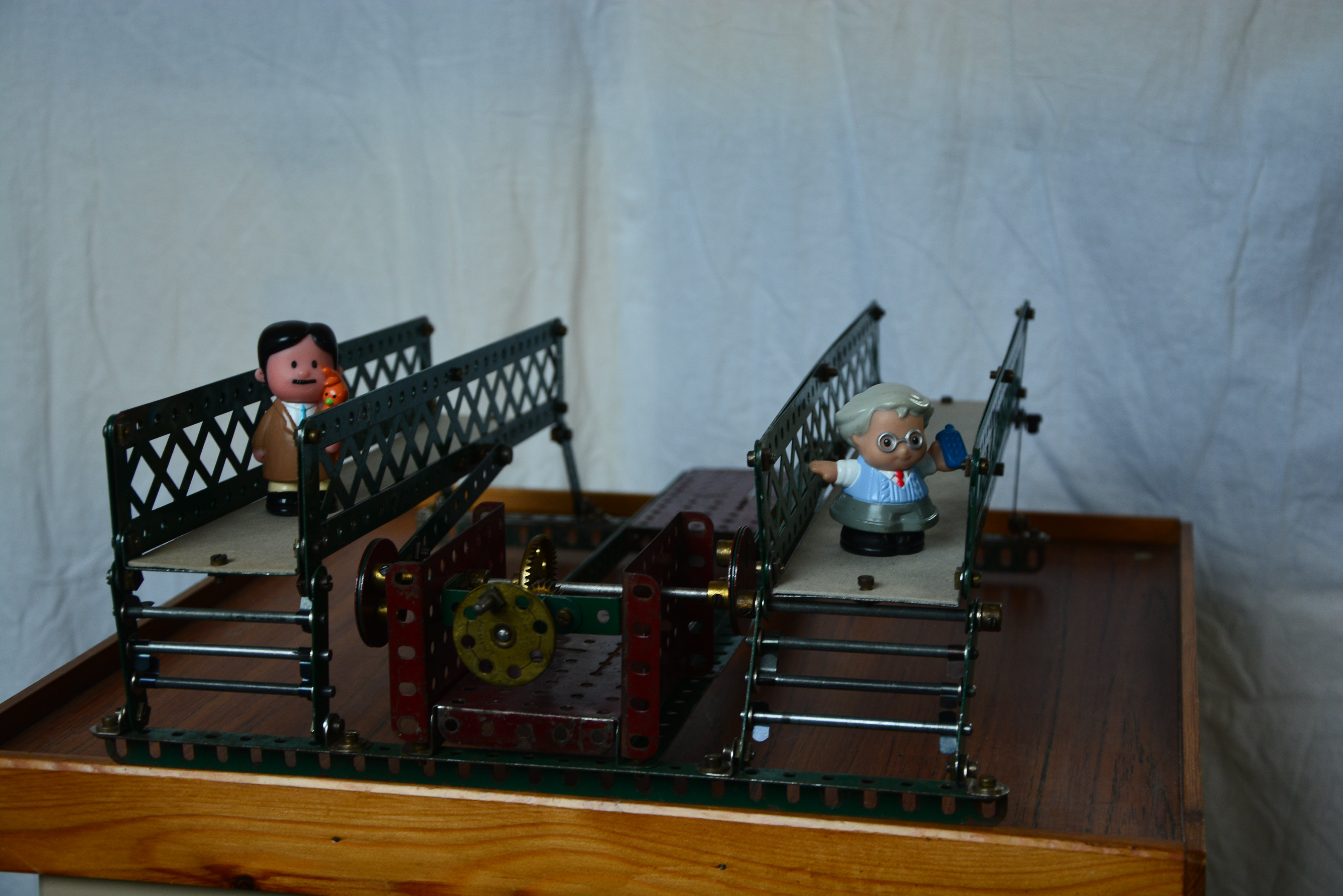Cake-Walk
This fairground attraction originated in the USA and would originally have been powered by a traction engine. The aim was to walk up and down without falling over!
The name originated in the Southern States, where the slaves would compete in dancing competitions to see who could do the most outlandish dance, the reward from their owners being a cake. What the slave-owners did not realise was that the dances were really taking off their own waltzes, minuets etc!
This model was in Meccano set manuals from 1913-1935. It is made from 1920s dark red and green parts. Note the use of cardboard as in the instructions, as thin flexible plates had not yet been introduced.
Ferris Wheel
Early versions of such vertically-oriented wheels with seats, ridden for pleasure, are documented from the 1600s. The original Ferris Wheel, sometimes also referred to as the Chicago Wheel, was designed and constructed by George Washington Gale Ferris Jr..
With a height of 80.4 metres (264 ft) it was the tallest attraction at the World's Columbian Exposition in Chicago, Illinois, where it opened to the public on 21st June, 1893. It was intended to rival the 324-metre (1,063 ft) Eiffel Tower, the centrepiece of the 1889 Paris Exposition.
The wheel rotated on a 71-ton, 45½ -foot axle comprising what was at that time the world's largest hollow forging, manufactured in Pittsburgh by the Bethlehem Iron Company and weighing 89,320 pounds, together with two 16-foot-diameter (4.9 m) cast-iron spiders weighing 53,031 pounds.
There were 36 cars, each fitted with 40 revolving chairs and able to accommodate up to 60 people, giving a total capacity of 2,160. The wheel carried some 38,000 passengers daily and took 20 minutes to complete two revolutions, the first involving six stops to allow passengers to enter and exit and the second a nine-minute non-stop rotation, for which the ticket holder paid 50 cents.
The Exposition ended in October 1893, and the wheel closed in April 1894. It was rebuilt on Chicago's North Side. It operated there from October 1895 until 1903, when it was again dismantled, then transported by rail to St. Louis for the 1904 World's Fair and finally destroyed by controlled demolition using dynamite in May 1906. (from Wikipedia)



